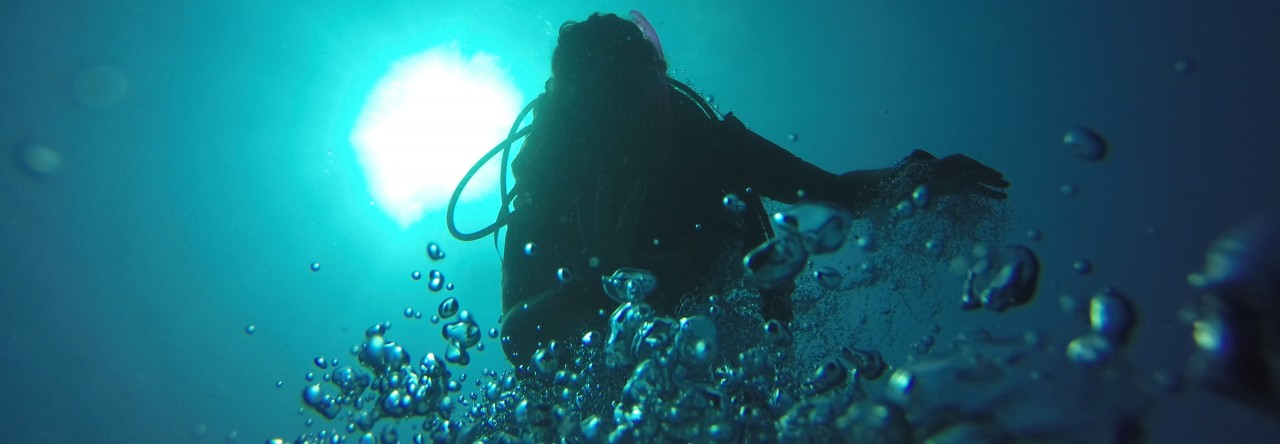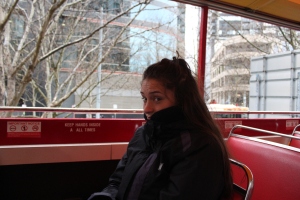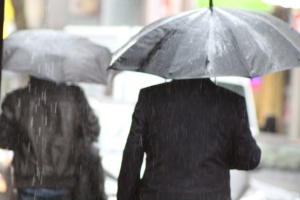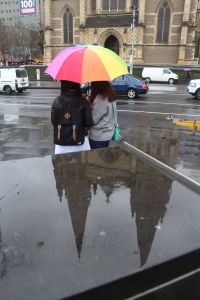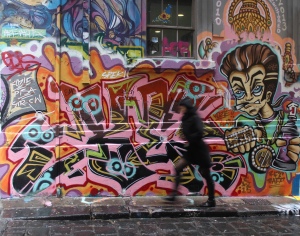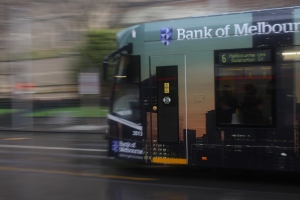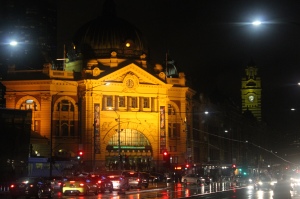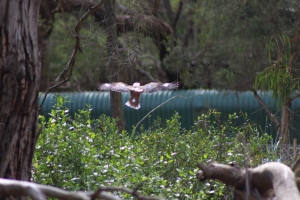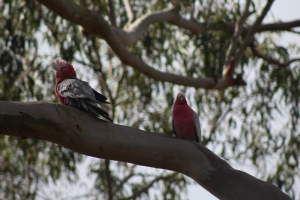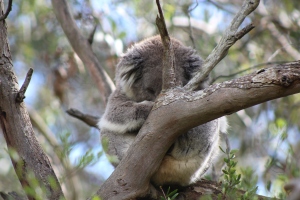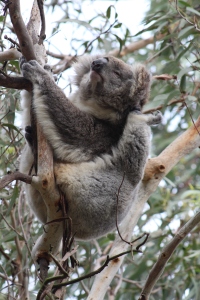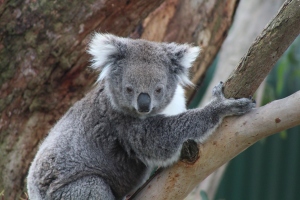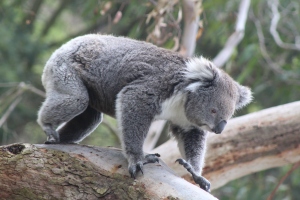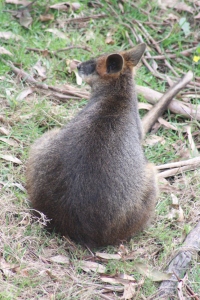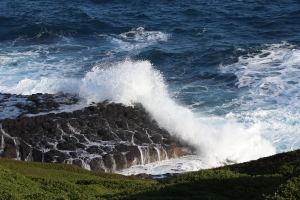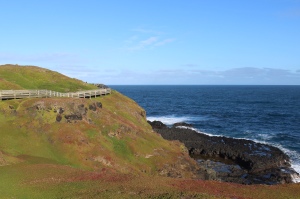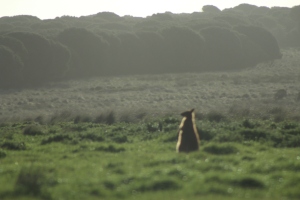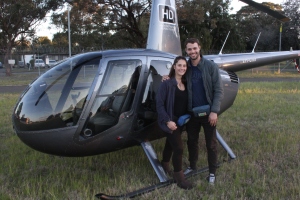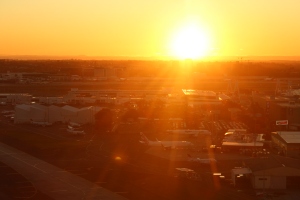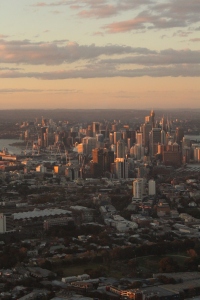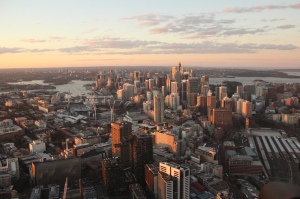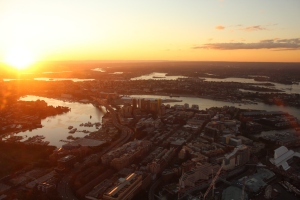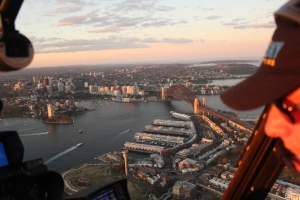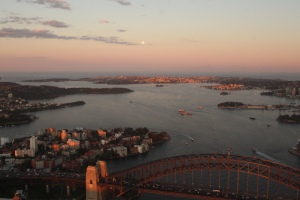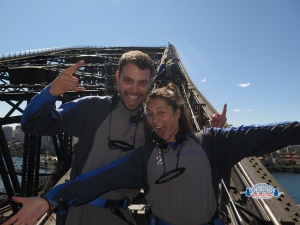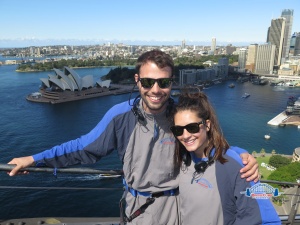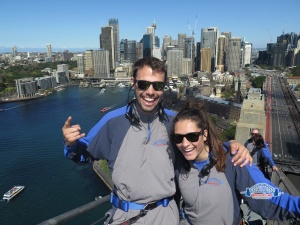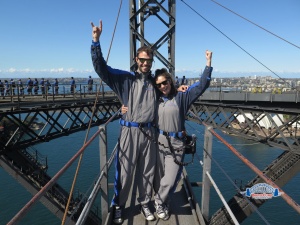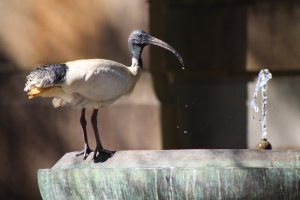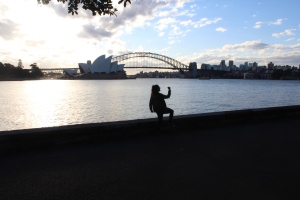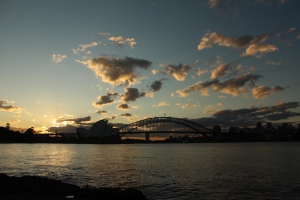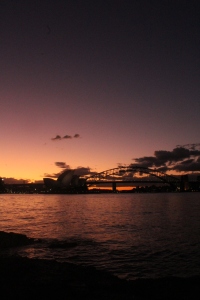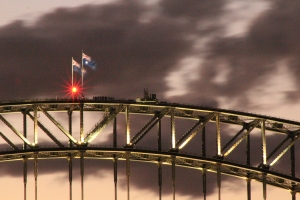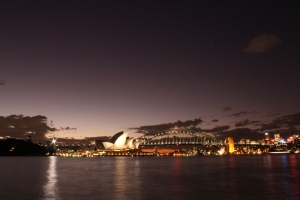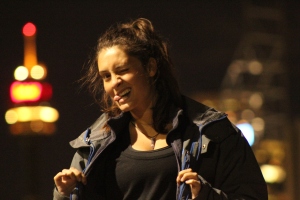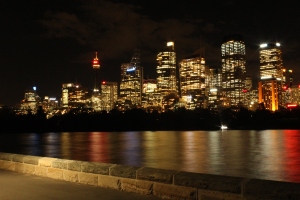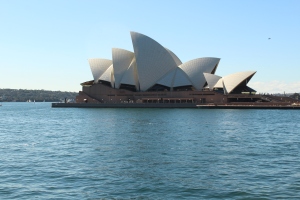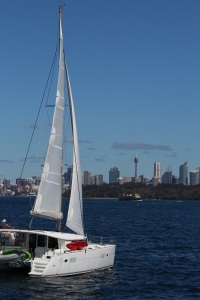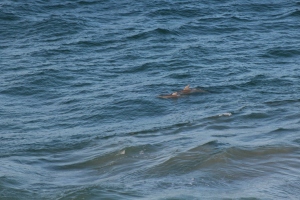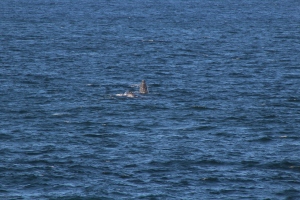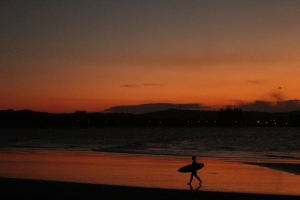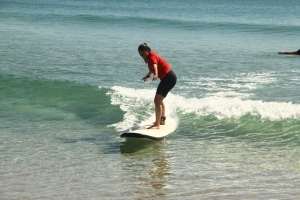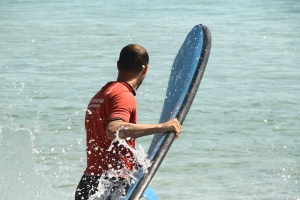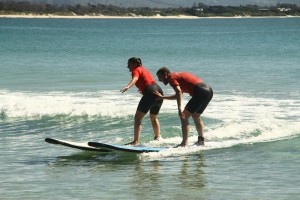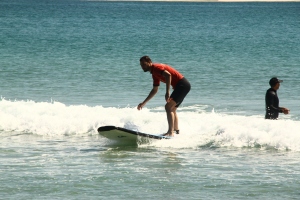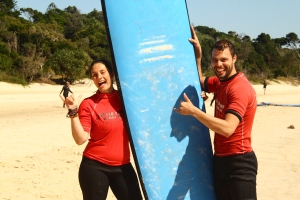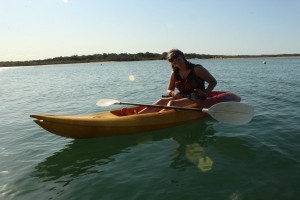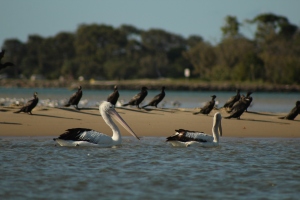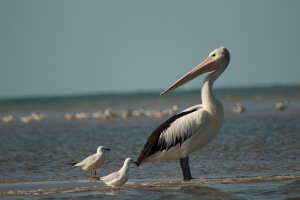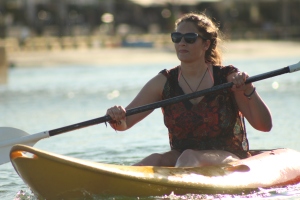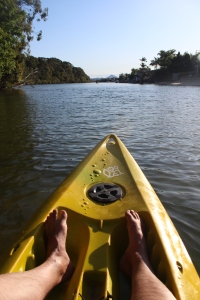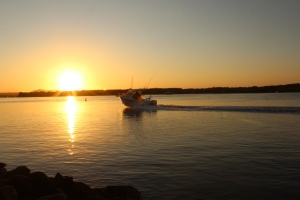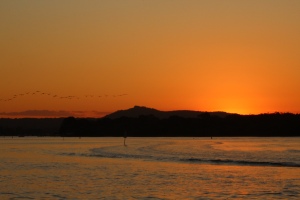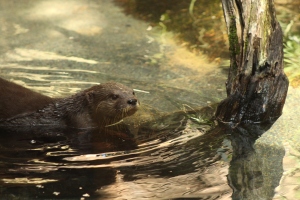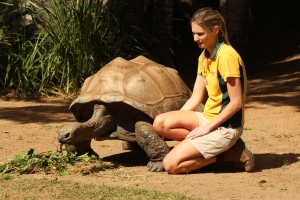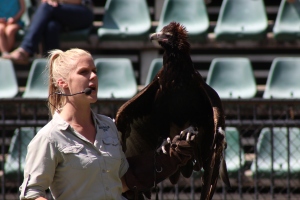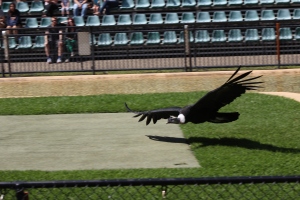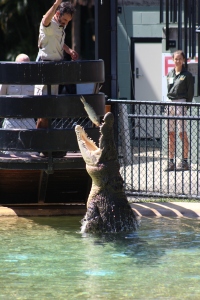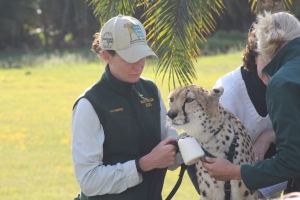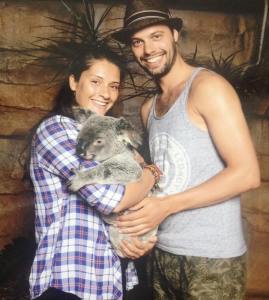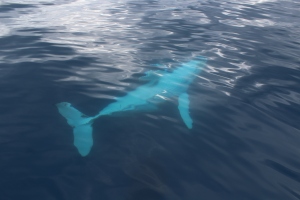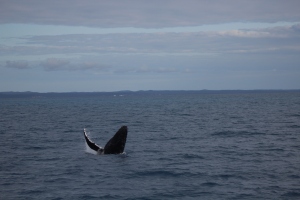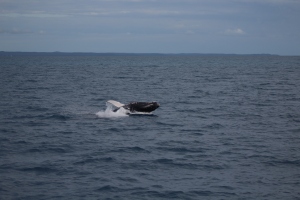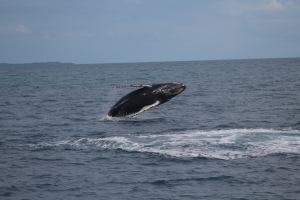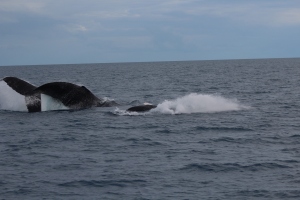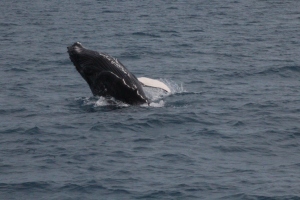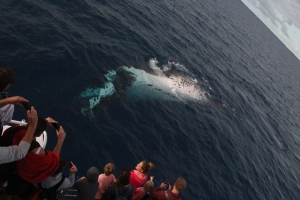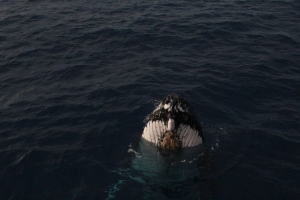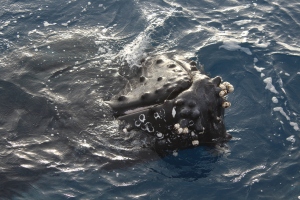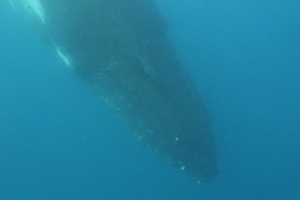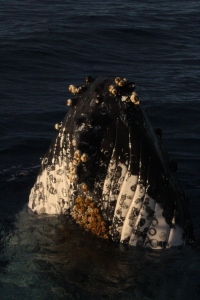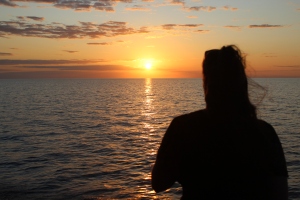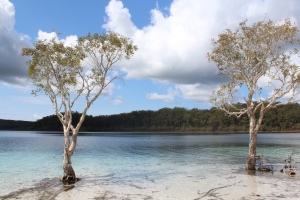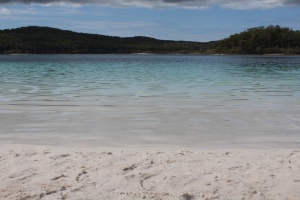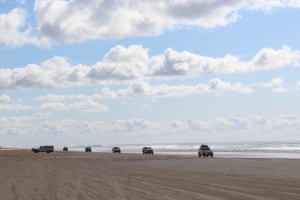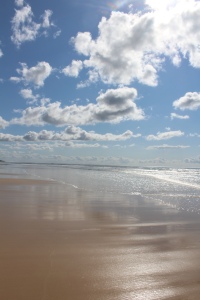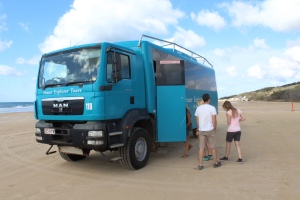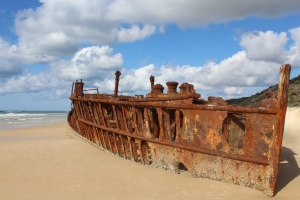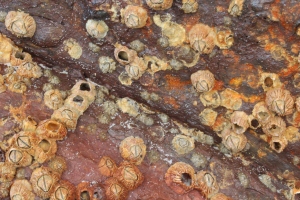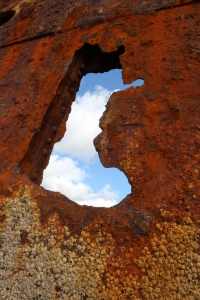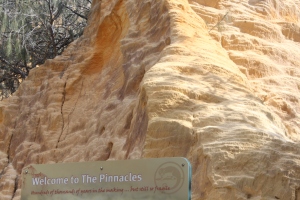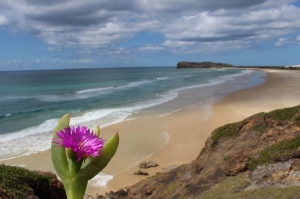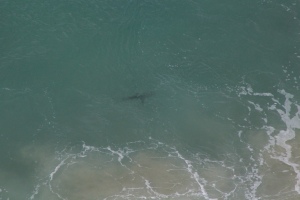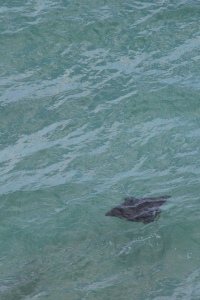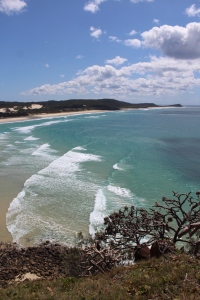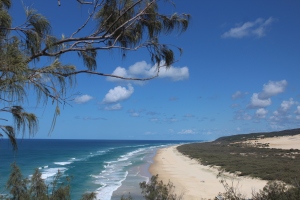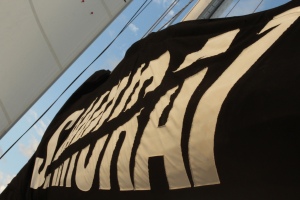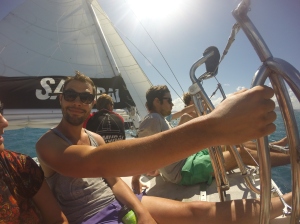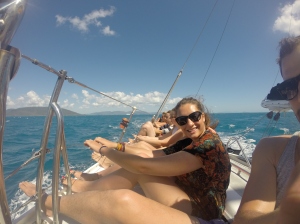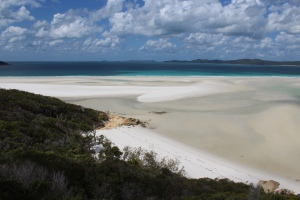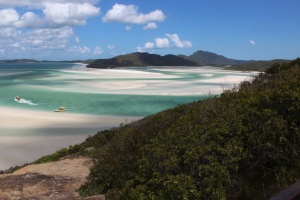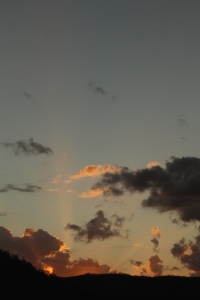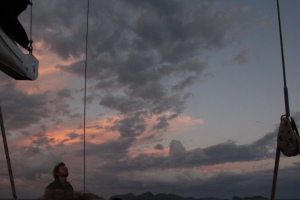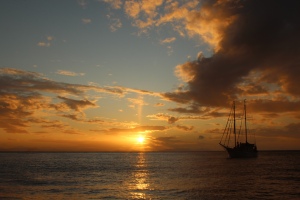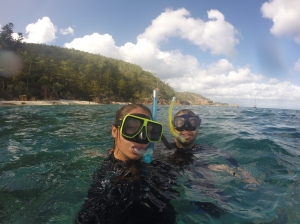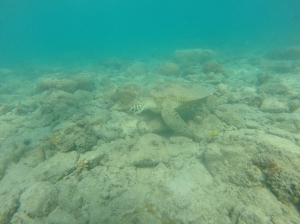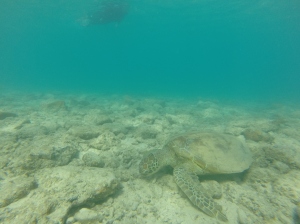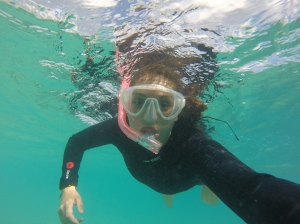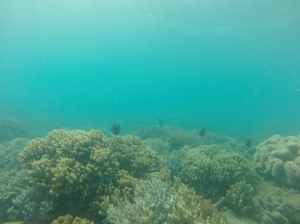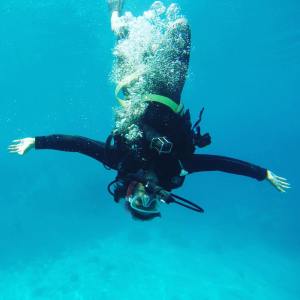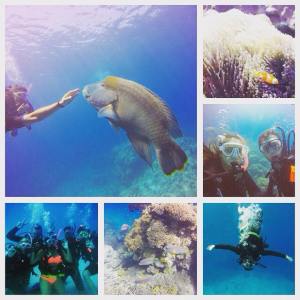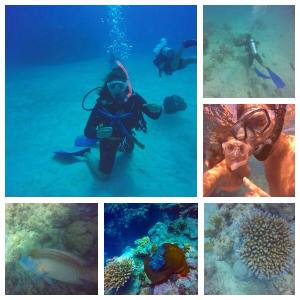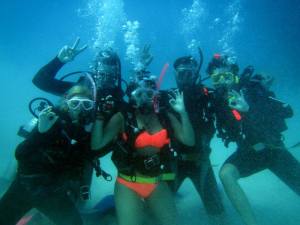Seven months of travelling and we are still complaining that we do not have enough time. Maybe visiting 16 countries is a bit too ambitious? We decided to spend a little bit less time in Australia and a bit more in New Zealand and Asia. Still about four weeks, so that should be enough for the east coast right? But to be honest, such a beautiful country deserves more time… Oh well, a good reason to come back!
We started in Melbourne with its beautiful views of the Yarra river. We met up with my friend and colleague Anton, who was on a six month secondment in London when I was there. We had some proper Asian food and a nice catch up on how he was settling back in to Melbourne. Unfortunately his fiancée couldn’t make it because she had to work. This was also the place where we could pick up Natasha’s passport. Anton was very kind in getting the passport for us from the office, so we could finally close this chapter. If you missed it, you can read our blog on the story of the stolen passports:
https://travelbbonanza.wordpress.com/2015/07/16/the-tough-side-of-travelling-the-story-of-the-stolen-passports
The next day we drove around in the sight seeing bus which was a good place to start except for the drowsy weather.
Luckily the weather improved and we booked an excellent tour to Phillip Island to see incredibly cute koalas, wallabies and the famous penguin parade. On top of that a wine and cheese tasting was included, what a tough life ay! There are definitely more tourists in Australia compared to New Zealand, so you can see the difference in activities. Where the penguin watching in New Zealand was intimate, on Philip Island there was a massive stage with people from all over the world watching the Penguins come to land. And obviously also a number of obnoxious people that could not sit down for a minute and be quiet.
Are they Koala bears or just Koalas?
Koalas evolved over 25 million years ago in the forests which covered Australia at that time. Koalas feature in many legends from the Aboriginal Dreamtime. Some legends say that Koalas have power over the rains and that if people treat them with disrespect, there will be a big drought.The word ‘Koala’ is thought to have come from an Aboriginal word meaning ‘no drink’ because Koalas obtain most of the moisture they need from gum leaves (Eucalyptus). Since European settlement in 1788, much of the Koala’s bushland has been cleared for farms, towns, roads, mines and logging, leaving many Koala populations with no homes or food. From the early 1800’s until the 1920’s, millions of Koalas were hunted and killed for their furs. Many people were upset about this and protested to the government, and eventually the Koala was made a Protected Species in all states by 1937. This means that no one is allowed to harm a Koala. However, there are no laws to protect the gum trees which Koalas rely on for food and shelter.
Koalas sleep about 20 hours a day, mainly because they need so much energy to digest the toxic Eucalyptus leafs. They are marsupials and the most distinctive characteristic, common to most species, is that the young are carried in a pouch. The koala is therefore not a bear.
The next stop was Sydney which was only a short flight away. I got addicted to helicopter flights, so I booked another one as a surprise for Natasha, but probably it was more for myself :P. I had to promise that this was the last one though :(. See below for some photos of beautiful city of Sydney…
Natasha really wanted to do a climb of the famous Sydney harbour bridge. A magnificent bridge which is even more spectacular seen from the top with views of the opera house.
Sydney Harbour Bridge
The Sydney Harbour Bridge, also affectionately known as the ‘Coathanger’, was opened on March 19th 1932 by Premier Jack Lang, after six years of construction. Made of steel the bridge contains 6 million hand driven rivets. The surface area that requires painting is equal to about the surface area of 60 sports fields. The Bridge has huge hinges to absorb the expansion caused by the hot Sydney sun. You will see them on either side of the bridge at the footings of the Pylons.
The rest of our time in Sydney we spent sightseeing the city and enjoying the pretty parks that you can find in many places. And of course a beautiful free sunset 🙂
Moving on along the coast further north with the greyhound bus we hopped off in chilled out and beautiful Byron Bay. It is difficult to explain what this place feels like, but there are so many people we have met for whom Byron bay is their favourite place. It is like time stands still here, no one is in a rush, surfing is the key activity and dreadlocks and a range of wristbands are a requirement…
We had too little time in Byron Bay to really adapt to the way of life that is a few notches slower than the rest of Australia. we did a lovely walk along the beach where we spotted Dolphins and Humpback whales.
We learned how to surf with our instructor Gaz a.k.a. Shrek. A passionate surfer that enjoyed a the sun (hence Shrek) and a few beers too many, but what a great teacher. He got us, as he promised, up on the surf board in a few goes. Ok, the waves were tiny, but never thought I would manage to do that!
Natasha loved Byron Bay so much, I barely got her to come with me to the next place (don’t tell her mum!).
On the bus again further north to Noosa where we rented a kayak to go around an island just off the shore. Massive Pelicans live around the island and it is great to watch them soar over the water looking for fish. There are beautiful houses at the water and a lovely jazz festival was on when we arrived by kayak. It made me think a bit of the lakes in the centre of the Netherlands.
We have seen so many animals in the wild, but we did not want to miss late Steve Irwin’s Australia Zoo. A beautiful zoo with heaps of space for the animals, by far the best zoo we have ever been. You definitely need a whole day to see the whole park. They have a range of animals that you can hold and take a photo with. Of course a bit commercial, but who doesn’t want to hold a koala? The zoo also has a great bird show and of course the crocodile show which made Steve Irwin’s famous! The zoo is a great memorial to his great conservation work.
Directly after the Australia Zoo, we bussed to Hervey Bay which is famous for the humpback whales that chill out in the bay for a few days before moving north to the Great Barrier Reef. Some have youngsters that are very playful and it was absolutely amazing to see them from so close. They played around the boat, peaked their big eyes out and we’re watching what we did on the boat. Such intriguing animals. Natasha spent a good amount on the lower deck to watch them through the underwater windows. Unfortunately most underwater photos did not survive as we drowned the GoPro later on :(.
Humpback whales on the move
Humpback whales migrate from Antarctica to the sub-tropical coastal waters of western and eastern Australia and Fiji to give birth and mate during winter and spring. Each year at least 1,200 humpbacks migrate 5,000km to the eastern coast of Australia.The Humpback whales that visit Australia’s coastal waters spend their summer months feeding in the Antarctic. With the onset of the southern hemisphere winter the Humpbacks migrate an average of 2,500km from polar waters to their tropical breeding grounds, undertaking some of the longest migrations in the animal kingdom. Although similar migrations of the same species occur in the northern and southern hemispheres, the two populations never interbreed, even where they use the same equatorial breeding waters, because the northward and southward convergences on tropical waters occur six months apart. Whereas most migrating whales avoid land masses, the Humpbacks follow the coastline reasonably close to shore, which makes them ideal for whale spotting.
In winter, Antarctic food becomes scarce and the waters become far too cold for these warm-blooded animals. The cold would kill any the new-born calves as they are born without the insulating layer of blubber. To ensure the survival of the calves, the mothers produce 600 litres of extremely rich milk per day.
The whales do not depart en masse but flow in and out of their breeding waters over a five-month period. As they travel they do not actively feed, except perhaps on occasional snack :).
Next to Hervey Bay is the beautiful Fraser island where we did a tour that takes you in a truck to the beaches around the island. Beautiful views, a shipwreck, rock formations and we could even spot sharks and rays in the water!
Then it was time for the night bus to the Whitsunday Islands where, upon arrival, we immediately jumped onto a boat for a three day sailing adventure on the ‘Samurai’. This boat was mainly used in sail races and therefore not necessarily equipped for comfortable sleeping and eating. Sailing was an incredible experience with the boat sometimes hanging 45 degrees in the air to catch as much wind as possible. I you were unlucky to sit at the front you were guaranteed to get soaking wet, but that’s part of the experience!
Why are Whitsundays called the Whitsundays?
Portuguese explorers may have been the first Europeans to visit this part of the Australian coast, but for the record it was Captain Cook, then a lieutenant in the Royal Navy, who passed through these islands on his first voyage around the world in the Endeavour. On the night of 1 June 1770 he anchored off what today is Mackay, and two days later sailed through a blue stretch of water dotted with islands.It was Whitsun, the seventh Sunday after Easter and the feast of Pentecost, so Cook named it the Whitsunday Passage. Archaeological research points to 8,000 years of Aboriginal habitation in this area, most recently by the Ngaro people who ranged far and wide through the high country around Proserpine and travelled from island to island in bark canoes. Wall paintings in caves at Nara Inlet on Hook Island indicate rich sea harvests of fish, turtle and local rock oysters.
Sleeping was slightly challenging with the constantly moving boat and the tiny beds which were of course a bit too small for me. Nevertheless we got enough sleep to enjoy the trip. The first stop was on an island where we took a short walk up to a view point to see the Whitsunday islands from above. Afterwards we could put our towels down in the warm white sand. We arrived in paradise…
The next day we chose to do an introductory dive on the boat with our German instructor Simon. For me a big challenge as my first dive a number of years ago was not a massive success.
The first dive and snorkelling were pretty cool with good visibility. It is amazing to see a turtle smoothly swimming around as opposed to the clumsy and slow walking they do on land. Natasha took some awesome pictures. The fish and coral were very colourful and beautiful to see. Unfortunately we couldn’t see that much on our second dive because of a strong current.
After three days at sea we had to get back to Airlie Beach to set foot on land again. It took me a few hours to get used to the fact that we were not moving anymore but actually back on solid ground. I was surprised how much I enjoyed this trip!
That same night (no time to waste!) we hopped on the next overnight bus to Cairns where we arrived at the beautiful hour of 6am. Luckily Maccie D was open so we could grab some breakfast there before we could check into our hostel where we would stay for the next 6 days.
Finally it was time to do what we came to Cairns for – learn to dive. Probably the scariest thing during this whole trip for me and I was dreading this day. See also my separate blog…
https://travelbbonanza.wordpress.com/2015/11/06/going-to-depths-to-overcome-my-fears/
The weather in Cairns started off with quite a bit of rain, but that was fine as the first days were spent in the classroom and in the pool. Together with our new friends Amanda, David (a Swedish fitness couple) and Tenz (a fellow Dutchie) we started our five day traning to become an adventure diver. Learning about all the things that can go wrong was worrying (our lungs exploding if we come up to the surface too fast, running out of air and of course getting lost underwater). But at the same time we learnt how we could solve these problems, so that was comforting at the same time. Diving in the pool was a great introduction as it is a safe environment and you can get used to the basics and all the equipment that is attached to your body. Natasha’s biggest fear was the exam that we had to take at the end of day two. But she passed of course, so no need to worry.
At the start of day three it was time to actually go out at sea. Frankie, our amazing Italian instructor was very relaxed and our first dive we could just enjoy rather than having to perform a bunch of skills. The Great Barrier Reef is a stunning underwater world and there are so many beautiful things to see. Nemos, sharks, turtles, nudie branches, you name it. See below for some pictures.
During the afternoon dive and the dives on day four it was time to show our skills and get our qualification. A few of the skills underwater included taking your regulator out of your mouth and throwing it behind you and then finding it again and putting it back into your mouth, taking your mask of for a minute, putting it back on and clearing it, swimming 9m (30ft) to the surface with one breath. Fun stuff ay? One of the key things was controlling our buoyancy. I have to say this was a new English word for me, but basically it means how stable you are in the water. Every breath in and out and the amount of air in the vest you wear (your BCD) will determine how stable you are and it takes quite a few dives to get this under control and quite a few more to be as good as Frankie :).
With the exception of one moment where I panicked when I got water in my mouthpiece, everything went smooth and Frankie congratulated us with our qualification at the end of day 4. We wanted to do some extra diving so we also booked a fifth day and it was great to do the last day with the same group as we grew quite close during the first part of the course. Basically three more ‘fun dives’ were waiting for us, a deep dive to 30m (100ft), a navigation dive to learn where to go underwater and a photography dive to complete the adventure dive course. Adventure divers can go down to 30m and you can see some different animals there.
Every day we were completely exhausted after the dives, but it was so worth it. For both Natasha and myself this was one of the best experiences in our life and something we want to continue doing on our holidays where possible. We fell in love with beautiful Cairns, its beautiful Great Barrier Reef and its lovely people. Asia was knocking on the door, so it was time to move on. We gave Frankie, Tenz, David and Amanda a big hug to say goodbye. Thank you guys for a wonderful trip, you made it very special!!
We took a few days to relax in Brisbane, wandered around and had a haircut and that was Australia for us. We are definitely coming back here to see the rest of this beautiful country. Bali here we come!

